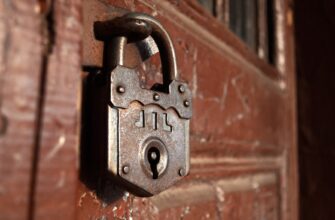Why Air-Gapped Wallets Need Anonymization
Air-gapped crypto wallets—hardware devices permanently offline—are already among the most secure storage methods. But security doesn’t equal anonymity. Without deliberate precautions, your transactions, balances, and identity remain exposed through metadata leaks, blockchain analysis, and physical vulnerabilities. Anonymizing your air-gapped setup closes these gaps, making your crypto activities virtually untraceable. This guide reveals practical techniques to achieve true financial privacy.
What Is an Air-Gapped Wallet?
An air-gapped wallet operates without internet connectivity, typically using USB drives, microSD cards, or dedicated hardware like the Coldcard. Transactions are signed offline and broadcast via intermediary devices. While this prevents remote hacking, it doesn’t inherently hide:
- Wallet metadata: Device serial numbers, file creation dates
- Transaction patterns: Recurring amounts or timing
- Physical links: Fingerprints, purchase records, or surveillance
Step-by-Step: How to Anonymize Your Air-Gapped Wallet
- Acquire Hardware Anonymously
- Buy wallets with cash from local sellers or privacy-focused retailers
- Remove packaging in public spaces to avoid CCTV linking purchases to your home
- Generate Keys Offline Securely
- Use dice or hardware RNG (Random Number Generator) for seed phrases
- Never photograph/type seeds—write on tamper-proof paper with UV pen
- Mask Transaction Origins
- Route funds through CoinJoin services (e.g., Wasabi Wallet) before transferring to air-gapped storage
- Use intermediate wallets with Tor for decoupling IP addresses
- Secure Physical Handling
- Wear gloves when handling devices to prevent fingerprint/DNA traces
- Store wallets in Faraday bags to block RFID/signal leaks
- Broadcast Transactions Anonymously
- Transfer signed transactions via USB using Tails OS on public computers
- Broadcast through Tor-connected nodes with tools like Electrum Personal Server
Advanced Anonymity Best Practices
- Multi-Sig Wallets: Require 2/3 keys to sign, distributing trust across locations
- Decoy Wallets: Maintain small-balance wallets to mislead physical attackers
- No-KYC Funding: Acquire crypto via P2P exchanges, ATMs, or mining to avoid ID links
- Regular Key Rotation: Migrate funds to new wallets annually to break blockchain analysis
FAQ: Air-Gapped Wallet Anonymization
Q: Does an air-gapped wallet guarantee anonymity?
A: No. Air-gapping prevents remote hacks but doesn’t hide blockchain activity or physical ownership. Anonymization requires additional steps.
Q: Can I use VPNs instead of Tor for broadcasting?
A: VPNs provide some privacy but rely on provider trust. Tor’s decentralized network offers stronger anonymity for transaction broadcasting.
Q: How often should I rotate wallets?
A: Every 6-12 months, or after large transactions. This disrupts chain analysis clustering.
Q: Are biometric locks on hardware wallets safe?
A: Avoid them. Biometrics create physical identity links. Use PINs and passphrases instead.
Q: Can law enforcement trace anonymized air-gapped wallets?
A: Extremely difficult if all steps are followed. Forensic analysis requires physical access and significant resources.
Conclusion: Privacy as a Process
Anonymizing air-gapped wallets demands meticulous execution—from anonymous hardware acquisition to Tor-based broadcasting. By layering these techniques, you create a “privacy firewall” that separates your identity from your crypto assets. Remember: In blockchain ecosystems, anonymity isn’t automatic; it’s engineered.








